Brasov is one of the most important cities of Romania, in economic and cultural terms, the seventh regarding population, and, also, one of the most beautiful.
Located on one of the oldest trade routes that united the three old Romanian regions – Moldova, Transylvania, and Wallachia -, about 170 km north of Bucharest, and near the Prahova Valley, Brasov is, from a tourist point of view, the city that attracts as a magnet both foreign and Romanian visitors, who come from all corners of the country to admire its beauties, many of them with deep historical roots.
The name of the city originated (according to a study by Dragoş Moldovanu) from the river Bârsa (or Bărsa), a term that concerned a piece of wood in the plow. Founded by the Teutonic Knights in 1211 and mentioned for the first time under its current name in 1251, the city became the center of a colony of Saxon merchants who produced, sold, and bought clothes, weapons, metal objects, and wax. The Slavs took the name, transformed it into Barsov, and later in Brasov, the city bearing, in a period of sad remembrance (1950-1960), the name of Orasul Stalin, which translates by The Stalin City.
The oldest building in Brasov is the Church of St. Bartholomew (located in the district with the same name), built around 1260 and tributary to the Cistercian Monastery in Cârţa. But, beyond this, Brasov has many sights worth visiting, and in the following, we have selected only 10 of them, somewhat “mandatory” for anyone who wants to discover the soul of this gorgeous city:
10 Catherine’s Gate
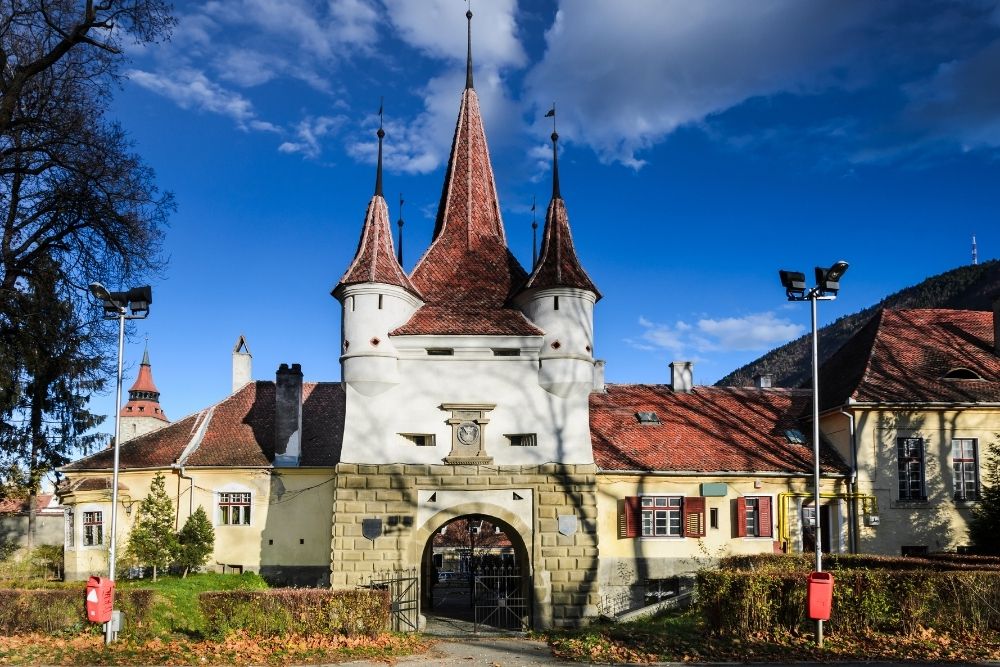
Catherine’s Gate (the name is taken from a convent of nuns) is one of Brasov’s most impressive medieval monuments. It is part of the seven gates of the fortifications that once surrounded the city since 1559. The gates were built in various periods; some were destroyed, others were not, but all of them were ways to enter the city for merchants and travelers. The gates were larger or smaller; some were authentic fortresses, which had many roles, including customs that collected taxes (for example – 3% of the value of the goods that the respective trader entered the city). The gates were closed at night and opened early in the morning.
The Catherine’s was one of the most significant gates of the city, the tower still standing today, being erected in 1559. The Gate had three levels and four turrets (these symbolized a medieval privilege that gave the leaders of Brasov the right to apply the death penalty – Jus Gladii). They had eight shooting holes (for which the authorities had provided cannons from Prague) and a tower vault, painted in Renaissance style. At one point, Catherine’s Gate proved to be too small for the traffic that took place in the city, which is why, in 1827, it was replaced by Șchei Gate, which can still be seen nearby (and it is recently renovated), with its three arches – two pedestrian and one central, for vehicles.
Catherine’s Gate was used as a warehouse in the ’50s, then in the early ’70s, it was restored. The coat of arms of Brasov was placed above the entrance, and the tower occasionally hosts various art and photography exhibitions. Nearby there is a small park where you can spend a few relaxing moments. Ecaterina’s Gate is located on Poarta Schei street.
9 The First Romanian School
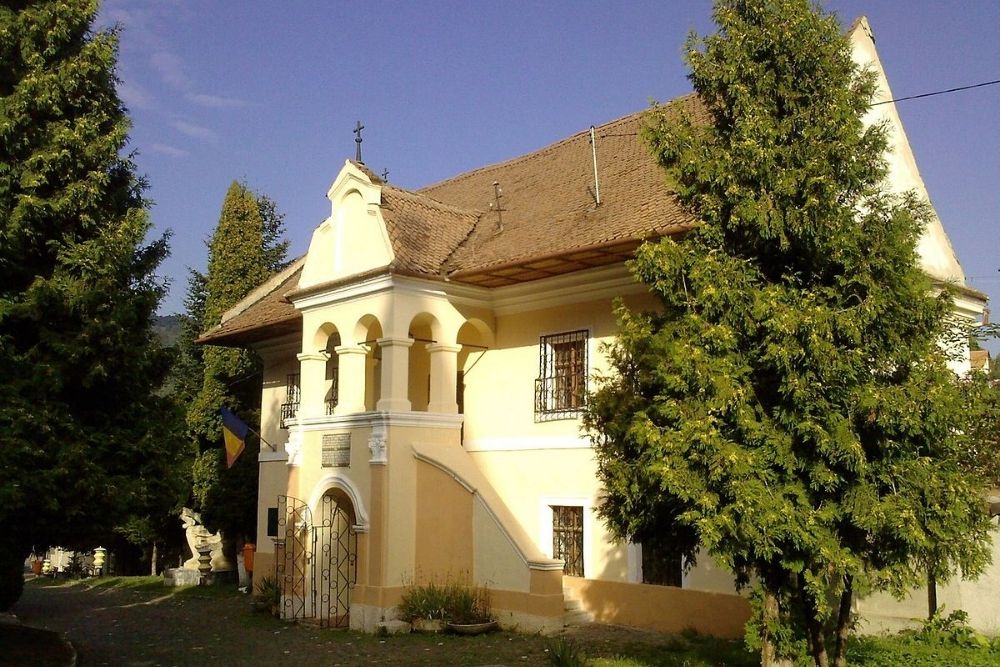
If you cross the Union Square, inside the courtyard of St. Nicholas Church, in Șchei district, you will discover a real historical treasure: The First Romanian School. That is the place where, in 1583, the first courses were held in the Romanian language. The building is, in fact, the host of the museum with the same name, where you can admire about 4,000 old books and more than 30,000 documents, artifacts, and objects related to Romanian education in these lands. Including printing presses, the first Russian Bible, the Govora Gospels, the Varlaam Cossacks, many Romanian bibles, old school furniture, etc.
The famous Anton Pann was one of the teachers from the First Romanian School, and currently, a class was named in his remembrance. Many of the objects located in the museum were donated by Alexandru Lăpuşneanu and Constantin Brâncoveanu, as the priest Vasile Oltean, director of this institution, said once.
8 Zoo Brasov
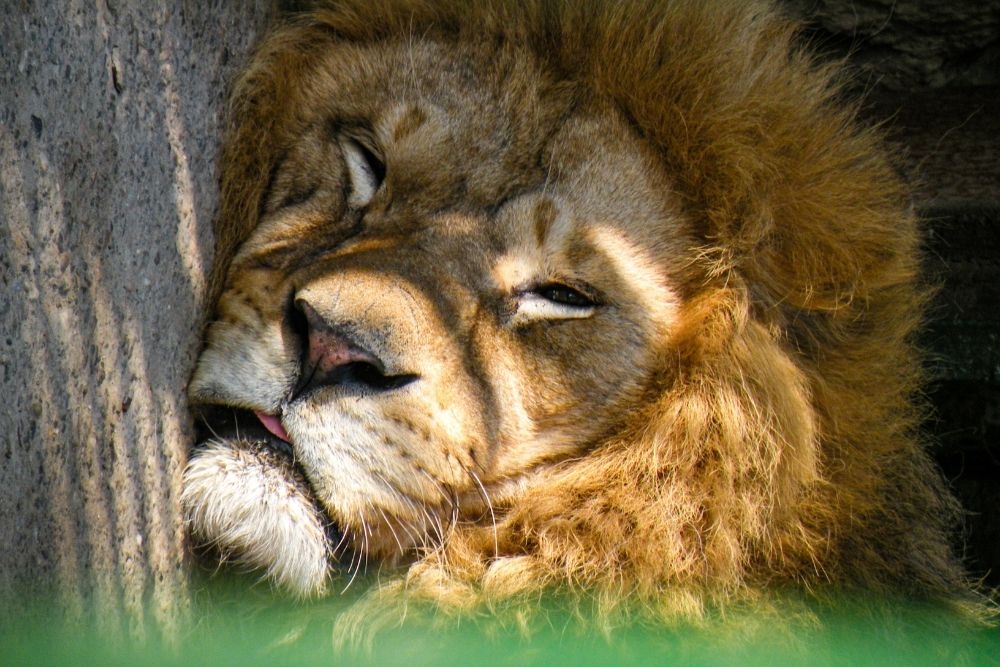
Zoo Brasov is the largest zoo in Romania, being arranged on a generous surface in a beautiful area in the middle of the forest, in Noua district. Although it has a history dating back to 1960, the zoo became important after the extension and redevelopment work, completed in 2014.
Thus, modern space was created, oriented towards education and recreation, hosting more than 380 animals from 110 species. From the Bengal white tiger to the Bactrian camels, from white lions to snow leopards, the animals receive optimal care, exploring the zoo, turning into an unforgettable experience for both children and adults.
Zoo Brasov is open all days of the week, except Mondays, between 9 – 20 hours. The entrance ticket costs 20 lei (adults) and 10 lei (children over two years).
7 The Adventure Park (Parc Aventura Brasov)
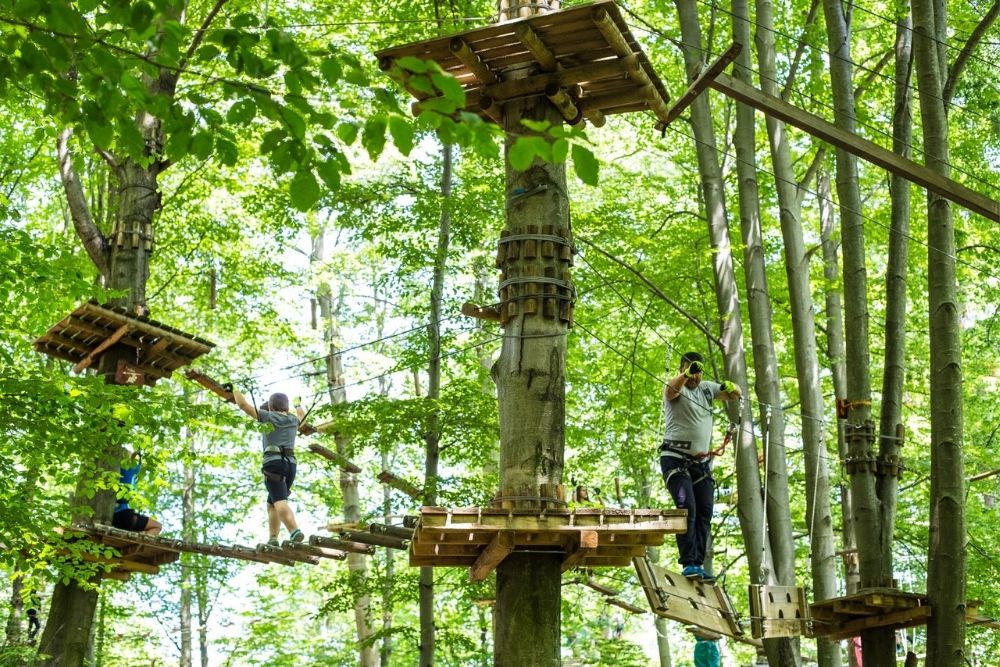
If you like outdoor activities and adrenaline, you must arrive at Parc Aventura, located in the suburbs of Brasov, in the vicinity of the Zoo and Lake Noua. Here, in the middle of 2.5 hectares of forest, you can spend three hours choosing one (or more) of the 15 routes, depending on their difficulty level. There are suspension bridges, 92 platforms, dozens of games, and 692 meters of Tyrolians, the longest crossing the lake on a distance of 307 meters.
The summer program of the park is from 10 to 20 (Monday to Sunday), the prices of the entrance tickets being 70 (children) or 80 lei (adults) for 3 hours of fun.
6 The White Tower
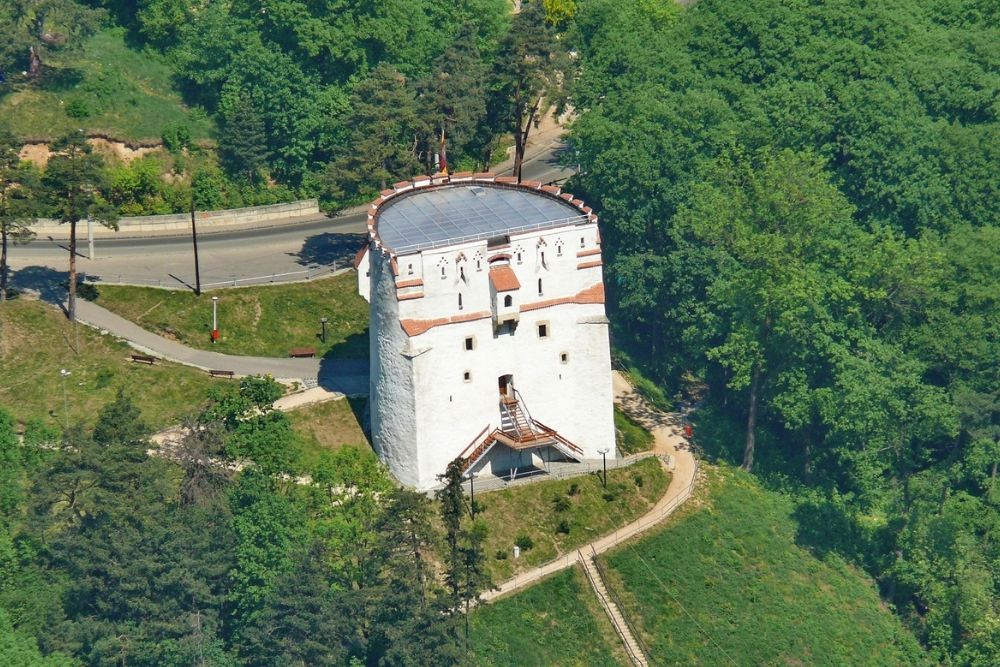
Finished in 1494, the White Tower, on the Straja Hill, was the most interesting defensive bastion of the Fortress of Brasov, having a slightly bizarre architecture, with an open semicircular plan shaped like a horseshoe. The tower had five levels and was the highest construction of the fortifications from Brasov (20 meters), being under the “jurisdiction” of the guild of tin and brass workers. The tower was not integrated into the fortress walls but was about 60 meters away from them, the connection with the Graft Bastion being made through a mobile bridge.
It received the name of the White Tower from the fact that it is plastered and whitewashed in this (non) color. It had the misfortune to be encompassed by the flames of the fire in 1689, but it was restored in 1723, year after which other and other restorations followed over the centuries. Today, the tower can be visited; inside, there is a small museum that houses various temporary exhibitions.
5 Weavers’ Bastion
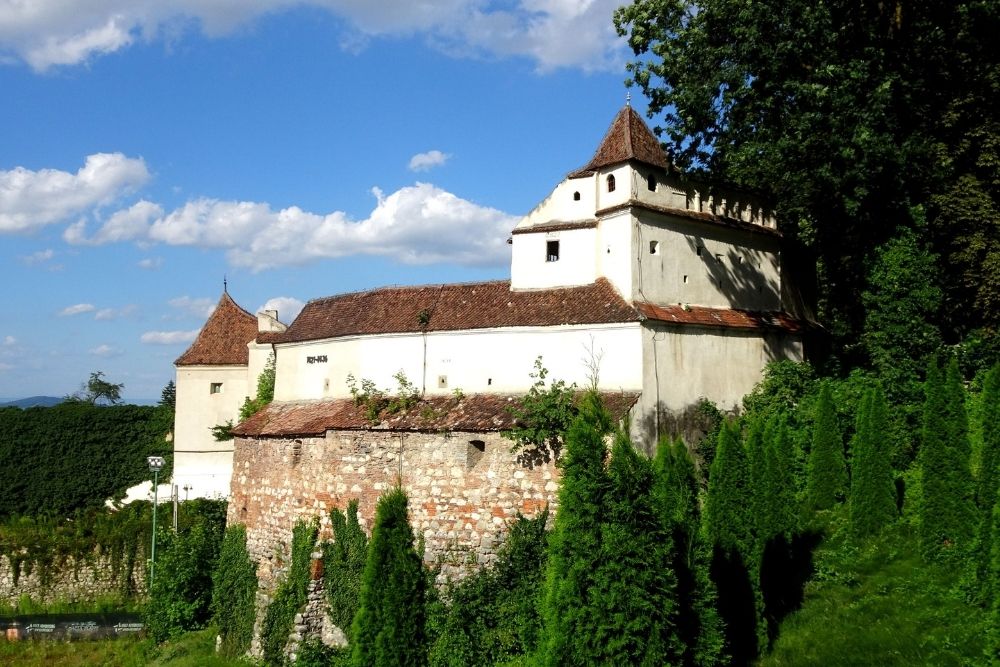
The linen weavers guild in Brasov is “responsible” for the erection of this bastion, between 1421 and 1436, in the southwest corner of the old fortress. Irregular polygon shape on four levels, with shooting holes for crossbows and bombers, with thick walls of 4.30 meters at the base and a meter at the top – here are the main elements of the Weavers’ Bastion, a spectacular example of defensive architecture from the medieval period of Brasov.
The Weavers’ Bastion kept its original shape, being bypassed by the great fire of 1689, and it was restored after; in 1701, a large part of it collapsed. For many years, it functioned as a warehouse. In 1950, the Museum of Fortifications of Tara Barsei was arranged inside. These were exhibited, among others, objects and weapons that belonged to the weavers guild, but also mock-ups of Brasov Fortress and Șchei district. Since the 2000s, opera and other artistic performances are held in the inner courtyard of the bastion.
Address: George Cosbuc no. 9
4 Rope Street
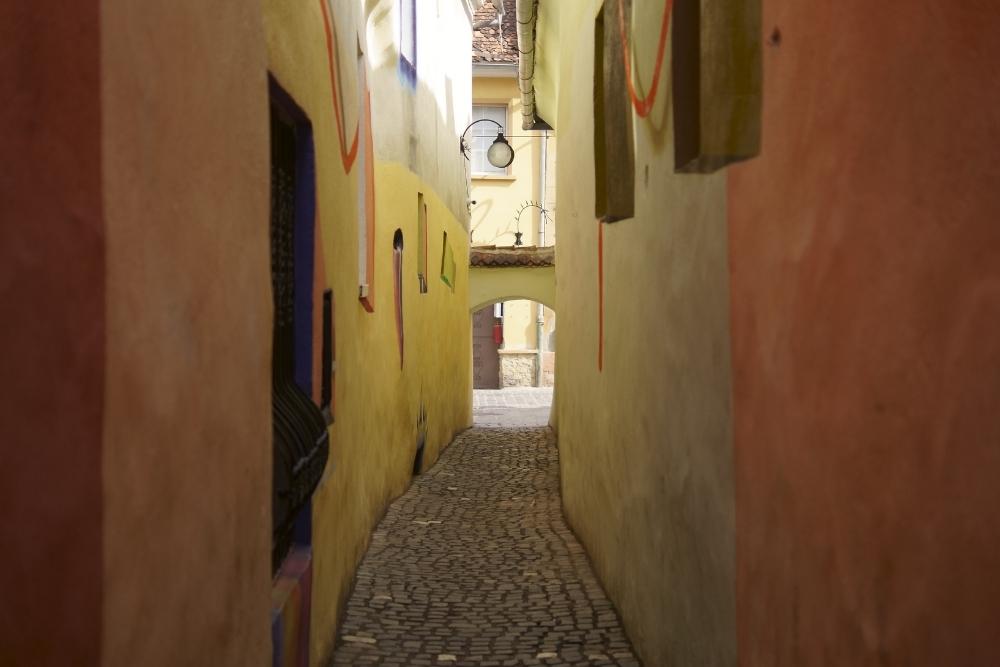
For a long time, Strada Sforii (Rope Street) was considered the narrowest street in Europe (now it ranks 3rd in this top, after the Spreuerhofstraße in the German city Reutlingen and Parliament Street in London). Its width varies between 111 and 135 cm, the length is about 80 meters. The street was built in the early 16th century and for a long time served as a corridor for firemen, the access of Brasov’s citizens being denied.
The street also has a legend, according to which here were hiding and kissing lovers whose parents disagreed with their relationship. They say that if you kiss your boyfriend or girlfriend on Rope Street, you’ll remain together for life.
Completely renovated in 2003, Strada Sforii is today one of the main tourist attractions in Brasov. It connects Cerbului Street with the Schei Gate Street.
3 Tâmpa Mountain
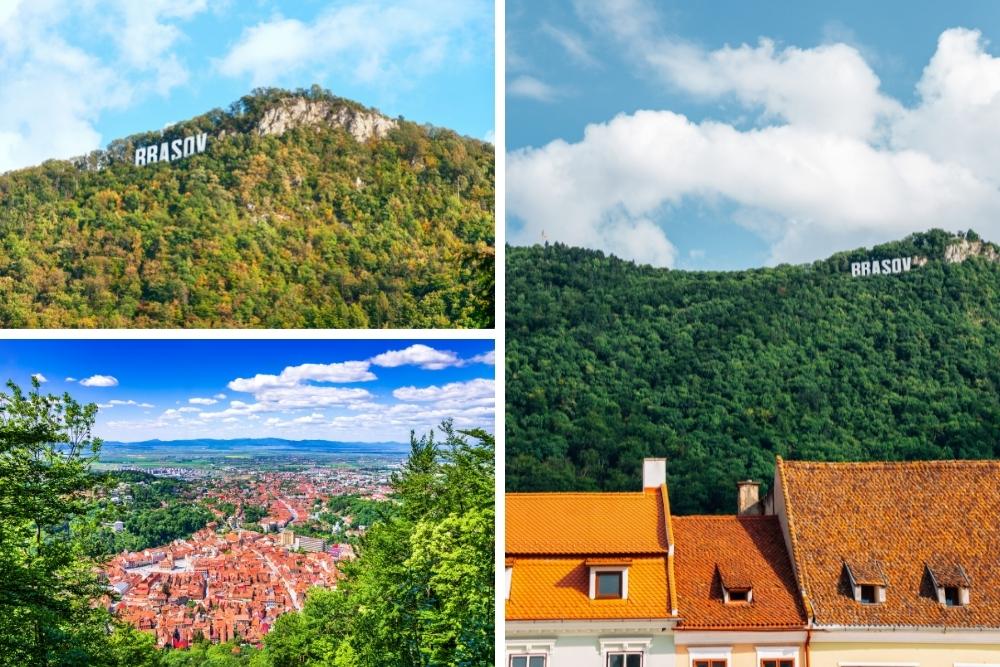
Tâmpa Mountain (part of Postavaru Massif) has a height of 960 meters. In their time, the Dacians had built here altars for sacrifices, then taken over by the Romans, who kept their meaning, venerating Saturn, the god of time, and naming the place Tempus (derived from the word “time”), this being one of the explanations of the name that bears today.
Tâmpa is a natural reservation, and the mountain, on which are located the letters BRASOV, in Hollywood style, can be accessed by walking (the route Serpentine Road – for those who love statistics, there are 25) or with the cable car that connects the chalet Casa Pădurarului from the foot of the mount and the Panoramic Restaurant from the top. It has been in operation since 1971.
On Tâmpa Mountain, on the west side of the peak, you can still see the walls of the Fortress of Brasov, erected by the Teutonic Knights between 1212 and 1218, which served as a refuge for Brasov from the Tatars attacks. Once you reach the top, you will have access to the beautiful panorama of Brasov and Țara Bârsei (Barsei Country), with a direct view of Piata Sfatului.
2 Council Square
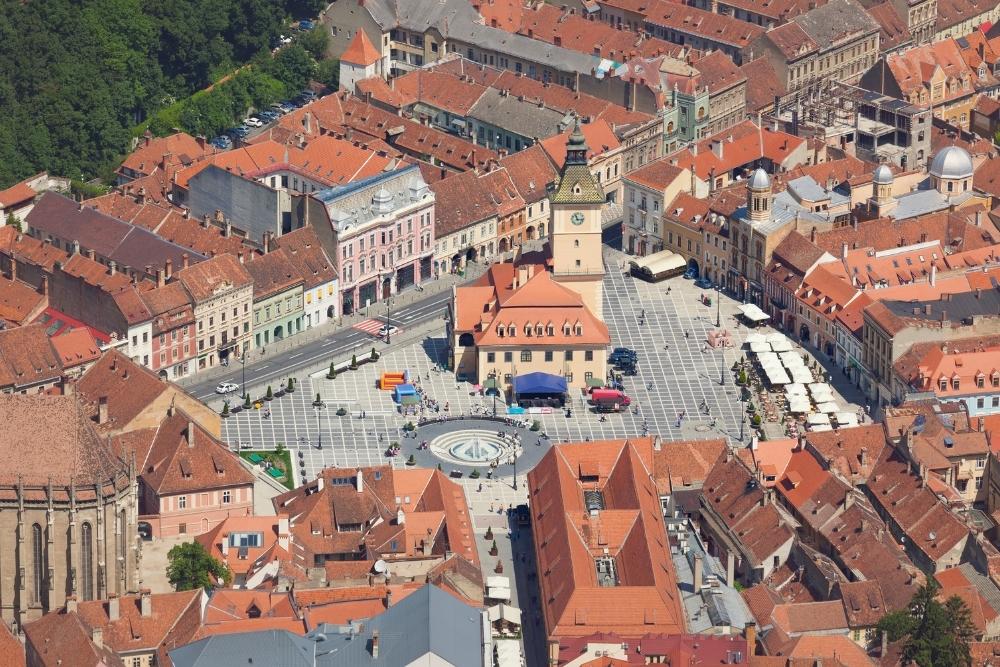
Council Square is the perfect area from which to start exploring the Old Center and, at the same time, the most visited place of Brasov. First built in 1420, the market has gone through various changes over time. Mainly, it was the place where various fairs were organized for local merchants and those arriving from Romania. Here was also a pillar of infamy in the Middle Ages, where witches or other outlaws were tight to be publicly judged.
The main building in Piata Sfatului is Casa Sfatului (The Council House), in the middle of the square, which initially had the role of a watchtower against Ottoman attacks, and then became a City Hall building (1503). Rebuilt several times (1608, 1662, 1689), the Council House was proposed for demolition in the early 20th century but saved at the last moment, following a protest of the local community. Restoration works followed, and in the 1950s, it became a museum, a role it still plays today – the County History Museum of Brasov.
The clock in the tower of the House of Advice has an interesting history, the original one (1516) having a mechanism similar to the one from Sighisoara Citadel, with a doll that moves to beat the gong at fixed hours. Affected by the fire of the 18th century, the clock was replaced, but it is kept in the History Museum.
In addition to the Council House, other important buildings are located in Piata Sfatului: Merchant House (built between 1541-1547 by Apolonia Hirscher, widow of Lukas Hirscher, judge of Braşov. In the Middle Ages, there was a place of sale for various merchandise sold by the guilds of the shoemakers and furriers), Casa Muresenilor (that houses the museum dedicated to the family of Mureseni family, of which were, among others, the poet Andrei Muresanu, the author of the lyrics of the national anthem Deșteaptă-te române and Iacob Muresianu, owner of the newspaper Gazeta Transilvaniei in the second half of the 19th century), Brasov Urban Civilization Museum or Filstich-Plecker House (originally built in the 16th century and host of several important institutions). Two steps away from Council Square is the Black Church.
1 Black Church
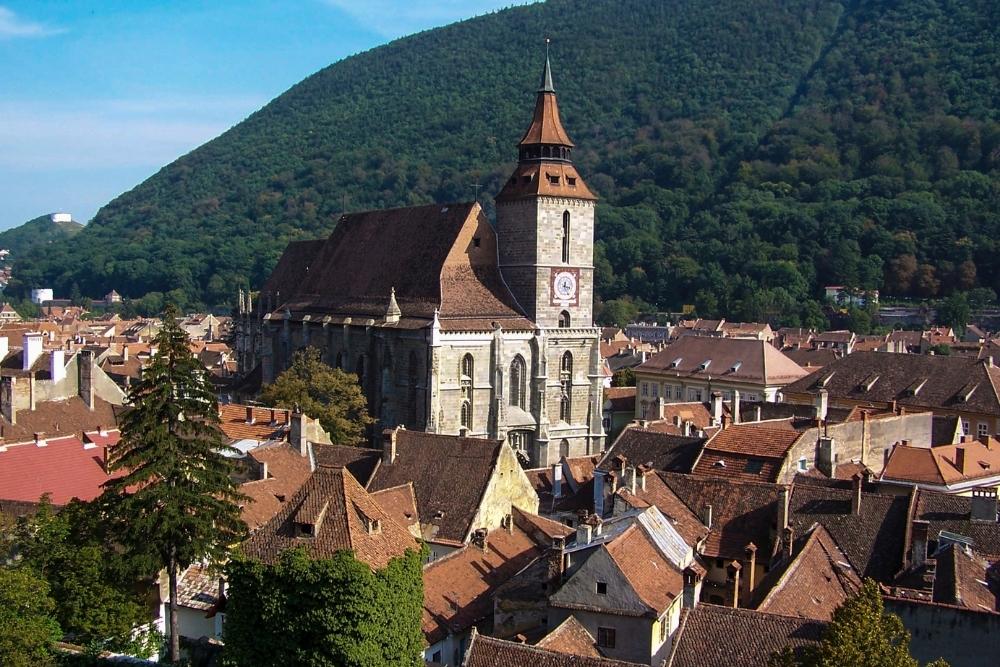
The second half of the 14th century (1383) marked the beginning of the construction of the Black Church in Brasov. It was completed in 1477 and is, at present, perhaps, the most representative example of Gothic architecture in Romania. At the same time, it is the second-largest church in Romania, after the Nation’s Cathedral in Bucharest, and the largest Gothic building in Southeast Europe (89 meters long, 38 meters wide, 65 meters high).
The church experienced a difficult moment in 1689, when a big fire partially destroyed it. Because the walls were blackened after the fire, the church received its current name, which, however, was officially recorded only in the 19th century.
To a large extent, the Black Church, which belongs to the Evangelical Lutheran community of Brasov, is the main symbol of the city. Over time, it was subjected to restoration and extension works, the most extensive being the last fire, when were hired artisans from the Hanseatic city of Danzig (Gdansk later) who rebuilt the vaults but in Baroque style, and not Gothic.
The church can accommodate about 5,000 people, and one of the great attractions of the interior is its famous organ, installed between 1836 and 1839 by Buchholz company in Berlin and inaugurated on April 17, 1839, through a concert performed by organist Carl August Buchholz. The organ has 3,993 tubes; the largest is 13m high and was restored between 1997 and 2001 when it was completely dismantled. Another record it holds is related to the bell tower, which weighs six tons and is the largest bell in Romania. And we can not go over the collection of oriental carpets (15-16 centuries), the second-largest in Europe, after the one in Topkapî Palace in Istanbul, about 110 copies being exhibited inside.
The way to visit the Black Church is by synchronizing it with an organ concert. Organ concerts have been held regularly since 1953, three times a week during the summer.
You may also like: Top 10 most beautiful castles in Romania

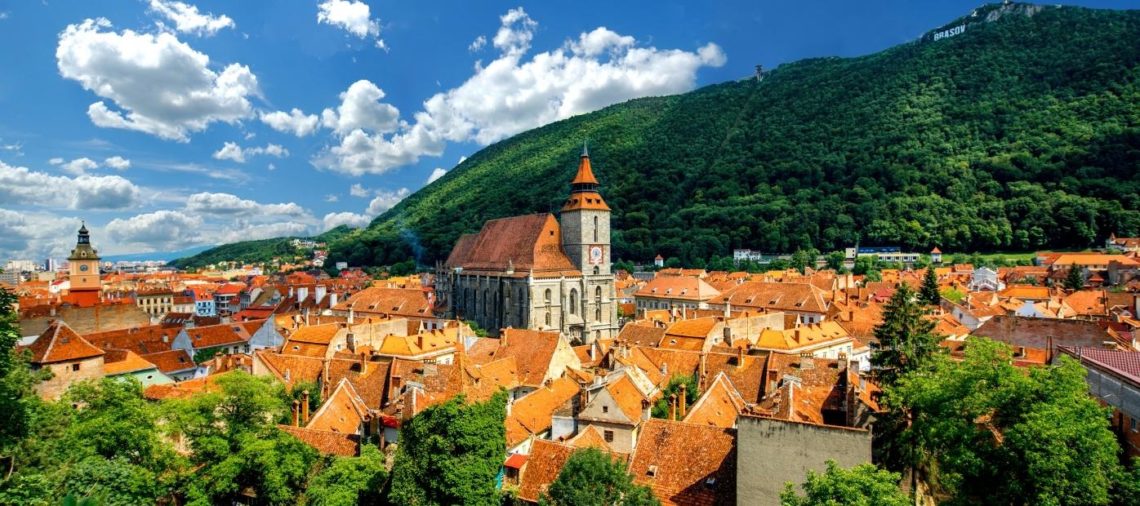



Comments 1